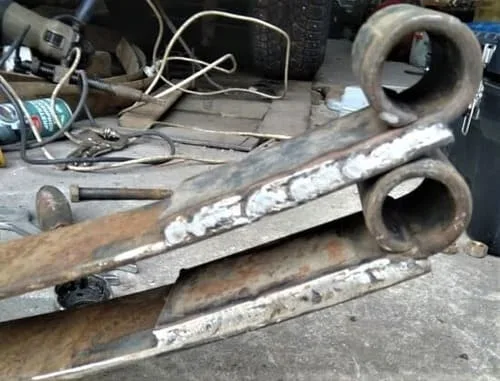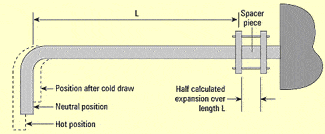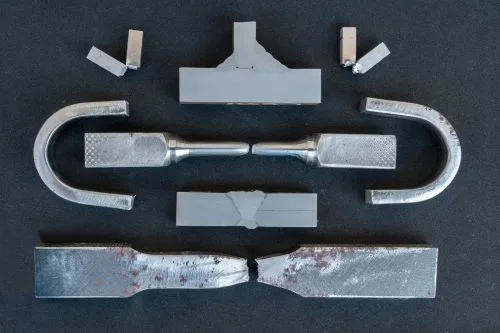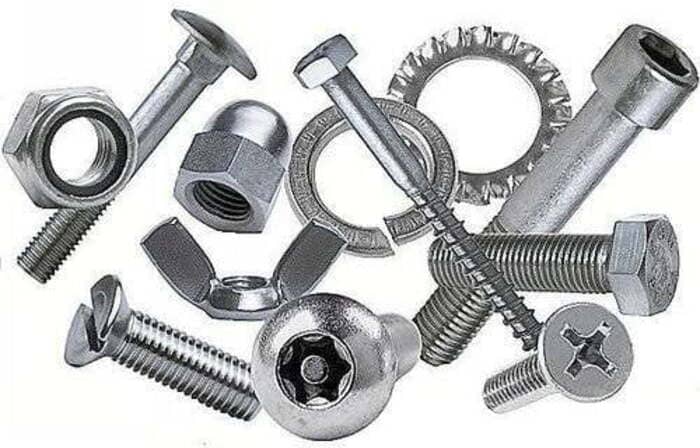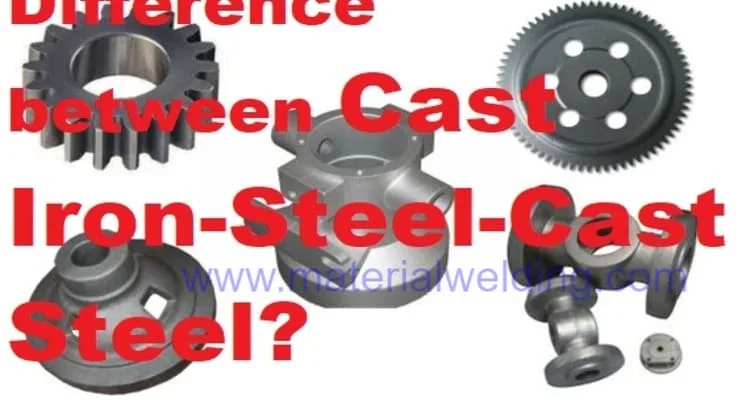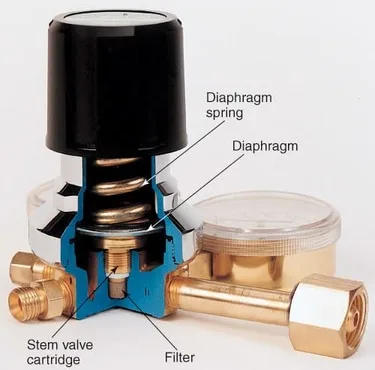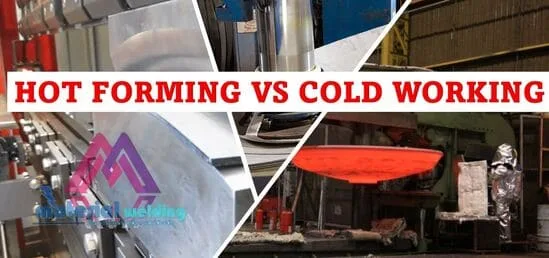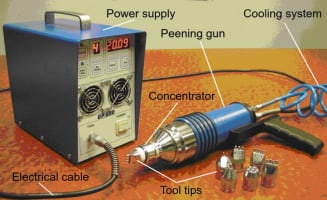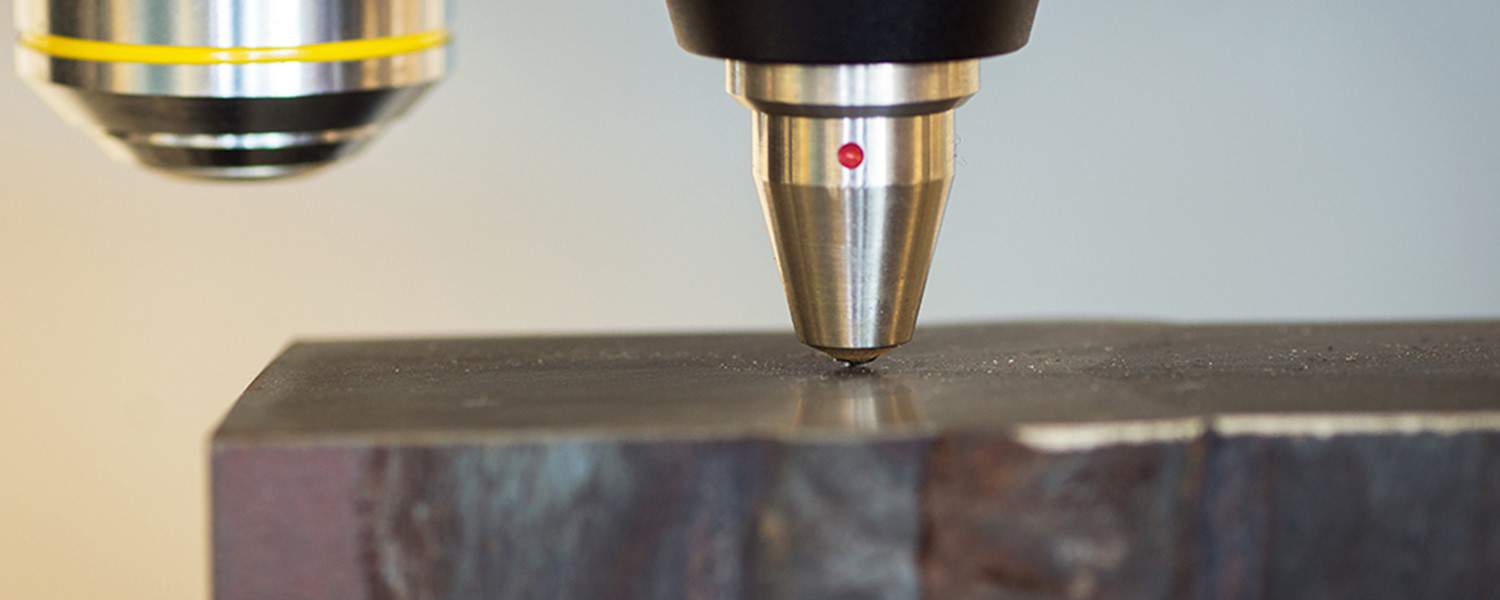What is Spring Steel?
Spring steel is a term that covers a wide range of metals used in the manufacture of springs and other applications. It has a high yield strength and resilience, allowing it to return to its original shape despite significant bending or twisting.
Compared to other steels, spring steel has a higher strength and can be deformed up to a certain stress (elastic limit “Rp”). After unloading, the spring steel then returns to the starting position without being permanently deformed.
For example, spring steel EN 10270-3-1.4310 has a tensile strength of 1250 to 2200 N/mm², compared to 360 N/mm² for structural steel S235JR.
The decisive difference here is the yield strength ratio, i.e., the ratio of elastic limit to tensile strength of the material, which is normally >85% for spring steels.
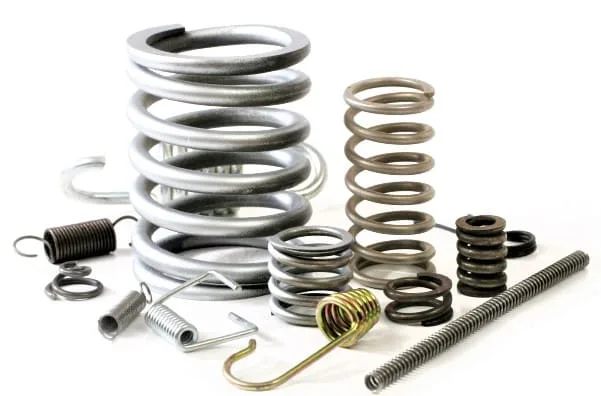
The elasticity as the main characteristic of a spring steel is achieved in the manufacturing process by a special alloy by adding silicon (Si), manganese (Mn), chromium (Cr), vanadium (V), molybdenum (Mo) and nickel (Ni).
Spring steel is a low alloy, medium carbon steel that has very high yield strength, capable of achieving tensile strengths as much as 2000MPa.
Due to their properties, such alloys are used for the manufacture of loaded car suspension elements, clock springs, vibration-resistant springs and many other parts.
Characteristics of spring steel
Spring steel must have a large elastic and sufficient plastic deformation capacity (winding of springs). It must have a high elastic limit, elongation at break and constriction, as well as a favorable creep and fatigue strength.
For this purpose, the spring steel should have a low edge end carburizing and crack-free surface. A final heat treatment can increase the tensile strength of the spring steel.
The main difference between carbon steel and spring steels is that spring steels have a high modulus of elasticity. This characteristic is inherent in carbon and alloy alloys.
Spring steel is used to produce power elastic parts with increased rigidity. The fact is that the high modulus of elasticity of such steel significantly limits the elastic deformation of the element made of this material.
Chemical Compositions of spring steel
The composition of spring steel includes carbon, its percentage can be from 0.30 to 0.80% of the mass of the alloy.
Spring steels can be made of corrosion resistant alloys (such as X10CrNi188, CuSn6), heat resistant alloys, Low temperature spring steels alloys, Non-magnetic spring steels and Seawater-resistant spring steels.
In addition, the following alloying elements are used:
- Silicon – up to 2,5 %,
- Manganese – up to 1,3 %,
- Tungsten – up to 1.3 %,
- Nickel – up to 1.7 %.
It should be noted that chromium and manganese with joint alloying make steel more resistant to low plastic deformations.
Additives such as nickel and tungsten contribute to the formation of the finest homogeneous structure of the carbide fraction, which prevents dislocation.
Carbon spring-spring steel is susceptible to deformation of the outer layer of the material.
In order for the spring steel to gain hardness, it is hardened in the temperature range of 850-880 degrees Celsius. However, the hardened material loses its elasticity as martensite is formed.
To make steel more elastic, it is tempered at temperature of 420-510 degrees Celsius. As a result, trostite is formed, the elastic deformation of the alloy increases to a tensile strength of 1200-1900 MPa and a yield strength of 1100-1200 MPa.
Spring steels are resistant to the formation of rust, because they contain alloying elements such as chromium and molybdenum
Despite the many advantages, spring-spring alloy steels have disadvantages:
- Spring steel is difficult to weld, due to high carbon and other alloying elements that affects the weldability.
- Spring steel is difficult to cut, as the material has a high resistance to deformation.
Heat Treatment of Spring Steel
There are many ways to heat treat spring steel. A particular technology is selected taking into account the production requirements for a steel product.
In most cases, two methods of heat treatment are used. With their help, it is possible to achieve the necessary chemical and physical characteristics of steel.
These two methods are:
- Normalization” and
- Quenching & Tempering.
Areas of application of spring steels
When it comes to manufacturing parts for machines or tools that must endure fatigue and pressure, spring steel is often the preferred choice.
Automotive parts such as shock absorbers are frequently made with spring steel because they need to remain durable despite long-term use in challenging environments. Similarly, medical devices such as bone screws require corrosion-resistance so spring steel may be the ideal choice for this purpose too.
It is also used in the production of springs which are designed to store energy by being compressed or extended.
Spring steel produces many elements that are used in cars, equipment and other installations.
However, not only parts for cars are produced from steel. Spring steel is the main material from which lock picks, springs for friction discs, all kinds of mechanisms used in production are made.
